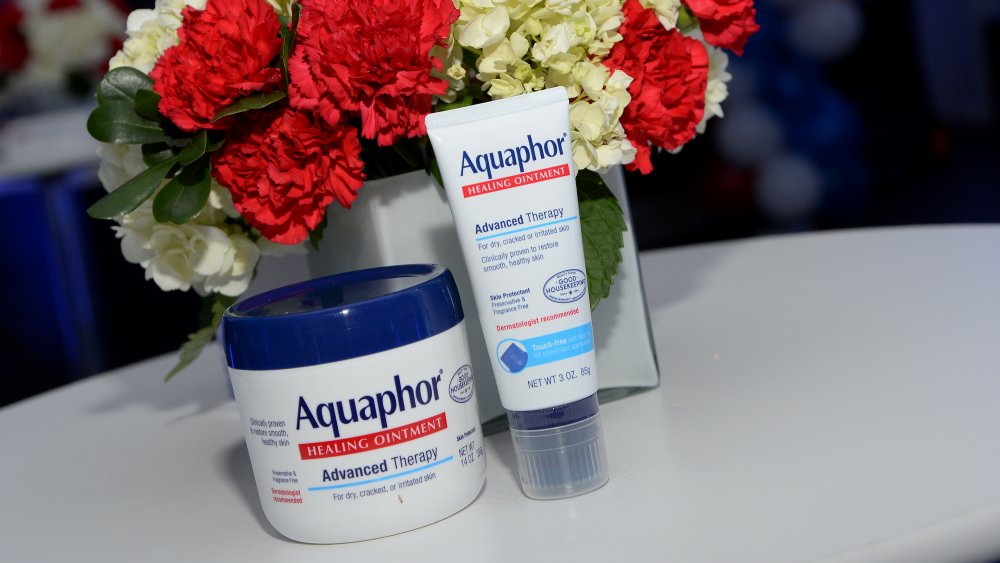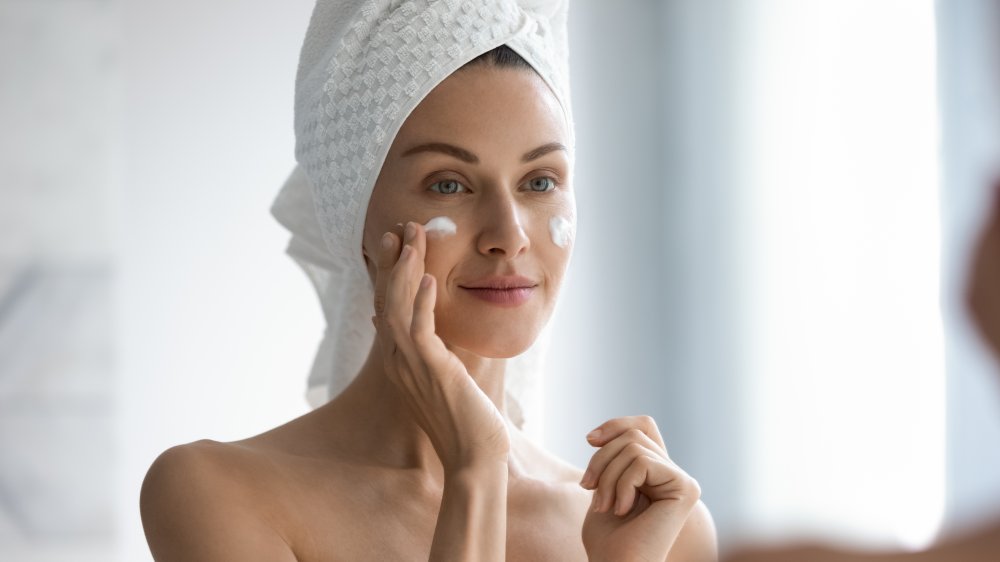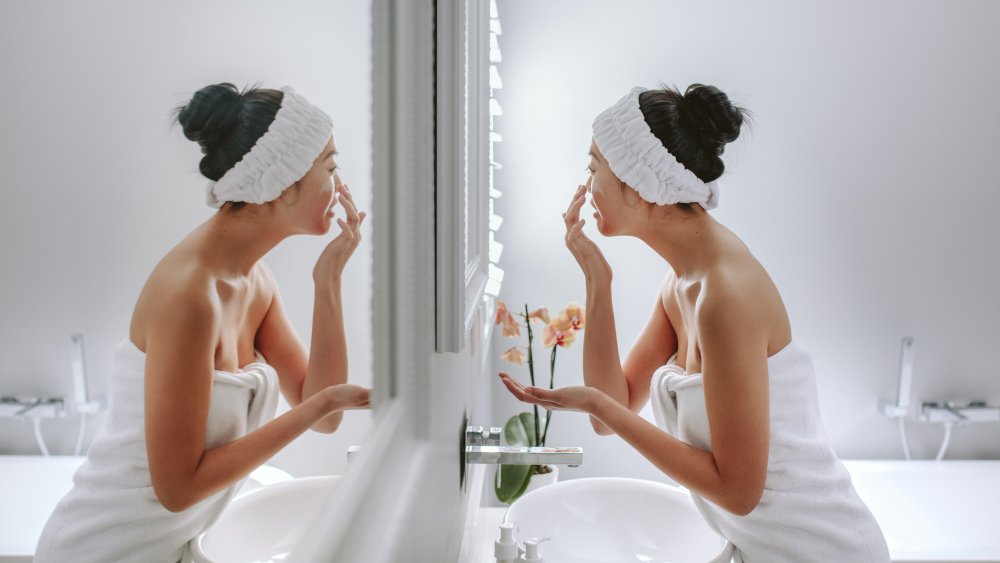The Truth About Aquaphor
Thanks (partly) to the power of celebrity endorsements and attractive advertising, a number of us may be conditioned to think that skincare, particularly where your face is concerned, needs to be pricey in order to work. On one end of the spectrum are creams that can cost hundreds of dollars, and on the other, there is Aquaphor.
Aquaphor Healing Ointment is a staple in many homes, because it does, well, pretty much everything. Dermatologist Michele Farber has plenty to say about the wonder ointment. "It is an occlusive, meaning it helps protect the skin barrier by sealing the top layer," she tells Today. "Aquaphor is also an emollient which means it helps add and lock in moisture. As an occlusive, it's ideal as a top layer to seal in other skin products. It helps seal in the moisture barrier and is great for dry areas on the body, healing cuts to prevent scars, dry lips, and healing cracked skin."
Aquaphor is great as a 'last step' product
Because Aquaphor's ingredients work to keep moisture on your skin, it can be used as the last step in a nightly skincare routine. Just apply a (super thin!) layer of Aquaphor over your moisturizer or serum, to help your skincare product deliver stellar results in the morning.
Your hydrated skin will thank you by delivering fewer fine lines and wrinkles, breakouts, and irritation. The process, which Cosmopolitan calls "slugging" (because your face looks like its been slimed by a slug), works wonders in the winter when your skin is being challenged by dry cold outside, and dry heat inside. But Nazarian warns that the technique may not work as well in the summer. "When sweat and oil can't escape through your pores as they should, you might start to see an acne-like sweat rash, which can look like itchy red bumps," she says.
Aquaphor is not for everyone
Aquaphor is made with petroleum which is made with mineral oils and waxes (the same stuff Vaseline is made with); glycerin, an ingredient which extracts moisture from air and pulls it towards your skin... and lanolin, which comes from sheep's wool. Because lanolin is made with an animal by-product, Aquaphor won't be suitable for vegans (and this isn't the only skincare item that might contain non-vegan ingredients).
And while it is rare, the Drug and Therapeutics Bulletin says 1 to 2 percent of people with eczema can develop an allergic reaction to lanolin, so it may also be best for those folks to give the cream a miss. As the last step in facial skincare, experts also say it pays to use Aquaphor with a bit of caution. "It can be great on the face, but if you are acne-prone or unsure of how to integrate properly, always check with your dermatologist," Faber says.


